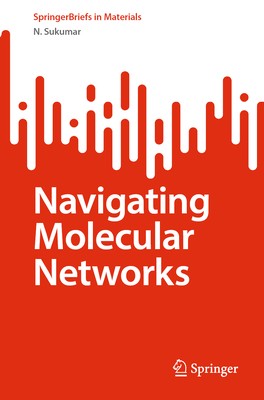
- We will send in 10–14 business days.
- SAVE -10% with code: EXTRA
Reviews
Description
This book delves into the foundational principles governing the treatment of molecular networks and "chemical space"--the comprehensive domain encompassing all physically achievable molecules--from the perspectives of vector space, graph theory, and data science. It explores similarity kernels, network measures, spectral graph theory, and random matrix theory, weaving intriguing connections between these diverse subjects. Notably, it emphasizes the visualization of molecular networks. The exploration continues by delving into contemporary generative deep learning models, increasingly pivotal in the pursuit of new materials possessing specific properties, showcasing some of the most compelling advancements in this field. Concluding with a discussion on the meanings of discovery, creativity, and the role of artificial intelligence (AI) therein.
Its primary audience comprises senior undergraduate and graduate students specializing in physics, chemistry, and materials science. Additionally, it caters to those interested in the potential transformation of material discovery through computational, network, AI, and machine learning (ML) methodologies.
EXTRA 10 % discount with code: EXTRA
The promotion ends in 17d.17:16:01
The discount code is valid when purchasing from 10 €. Discounts do not stack.
- Author: N Sukumar
- Publisher: Springer
- ISBN-10: 3031762894
- ISBN-13: 9783031762895
- Format: 15.6 x 23.4 x 0.7 cm, softcover
- Language: English English
This book delves into the foundational principles governing the treatment of molecular networks and "chemical space"--the comprehensive domain encompassing all physically achievable molecules--from the perspectives of vector space, graph theory, and data science. It explores similarity kernels, network measures, spectral graph theory, and random matrix theory, weaving intriguing connections between these diverse subjects. Notably, it emphasizes the visualization of molecular networks. The exploration continues by delving into contemporary generative deep learning models, increasingly pivotal in the pursuit of new materials possessing specific properties, showcasing some of the most compelling advancements in this field. Concluding with a discussion on the meanings of discovery, creativity, and the role of artificial intelligence (AI) therein.
Its primary audience comprises senior undergraduate and graduate students specializing in physics, chemistry, and materials science. Additionally, it caters to those interested in the potential transformation of material discovery through computational, network, AI, and machine learning (ML) methodologies.


Reviews